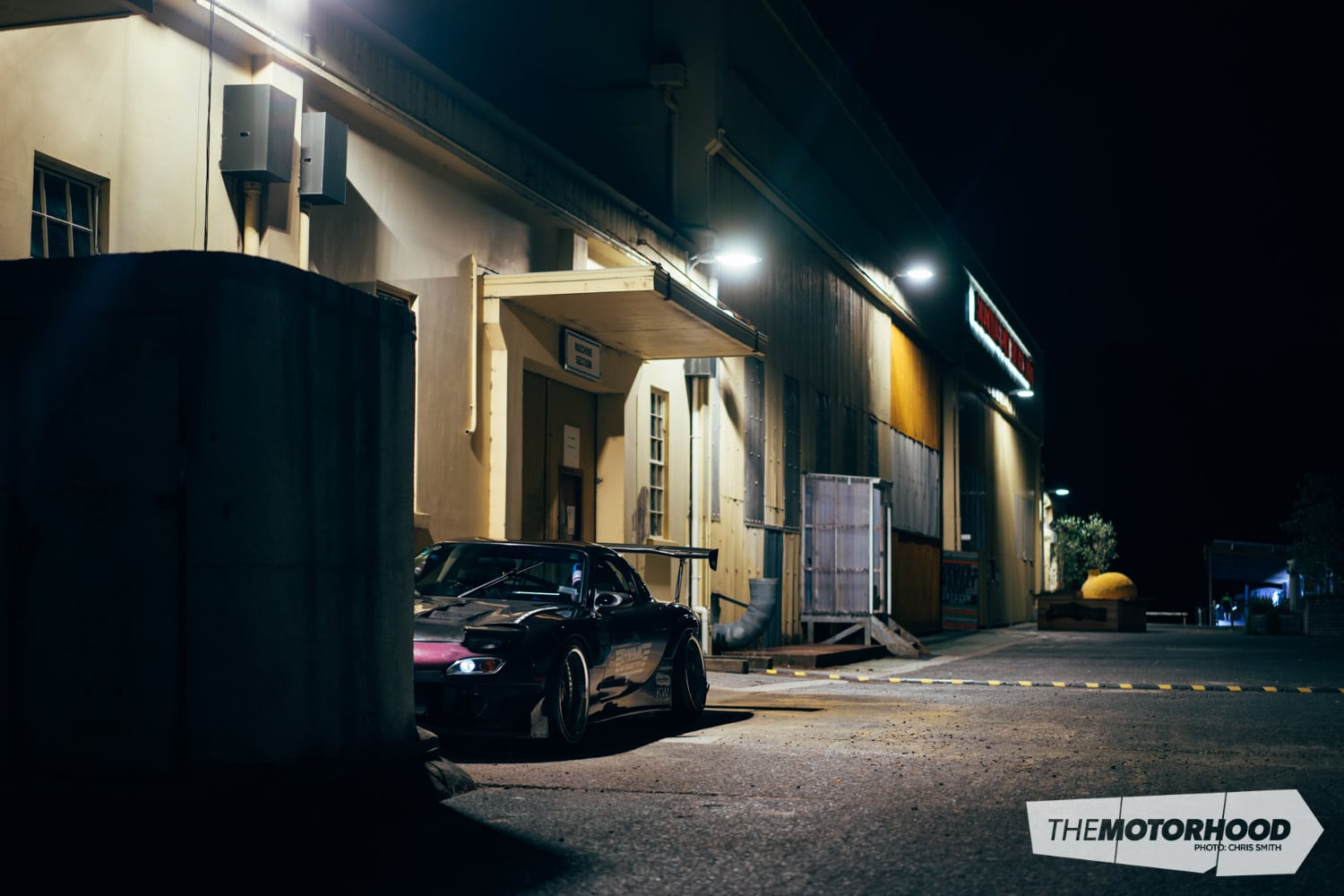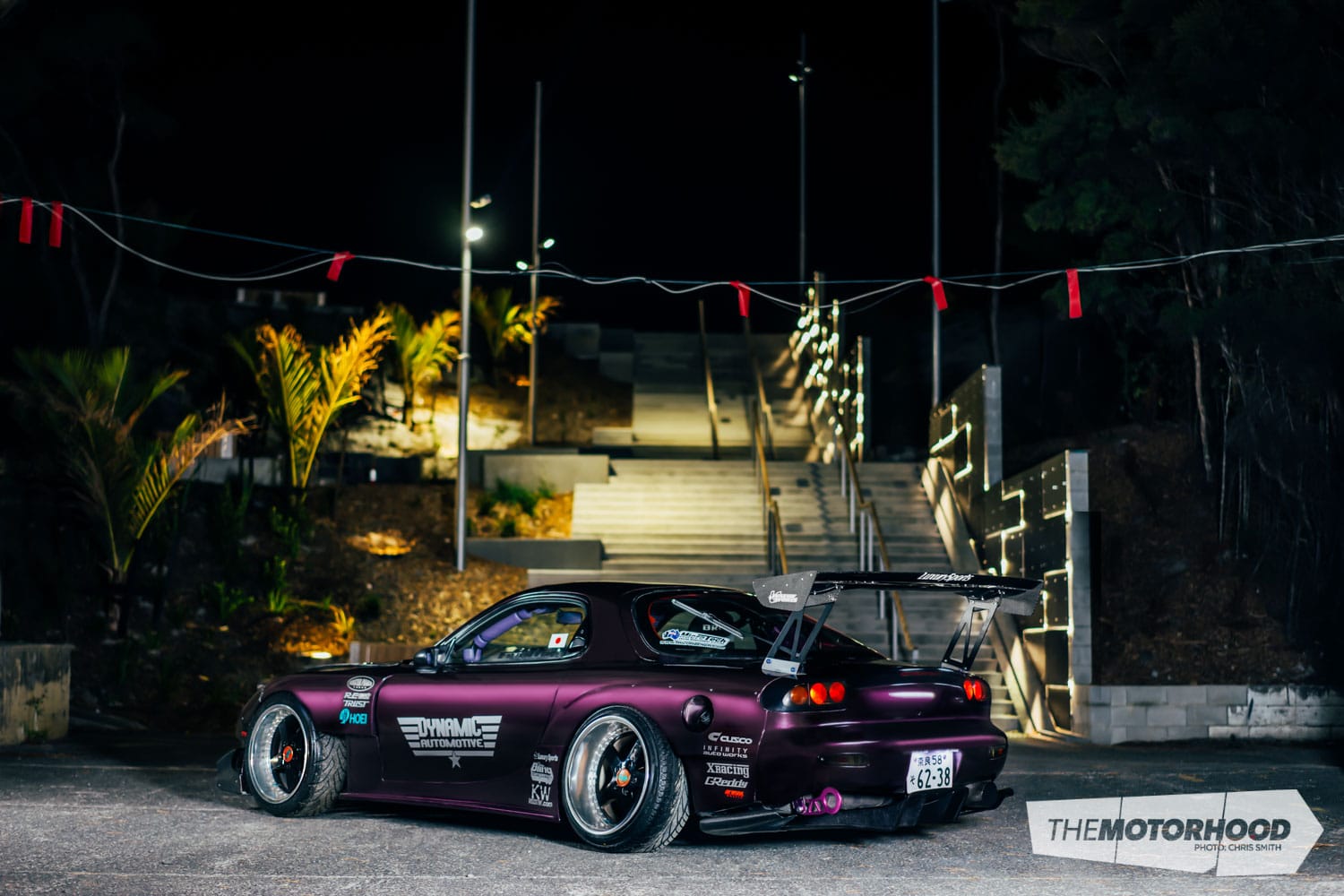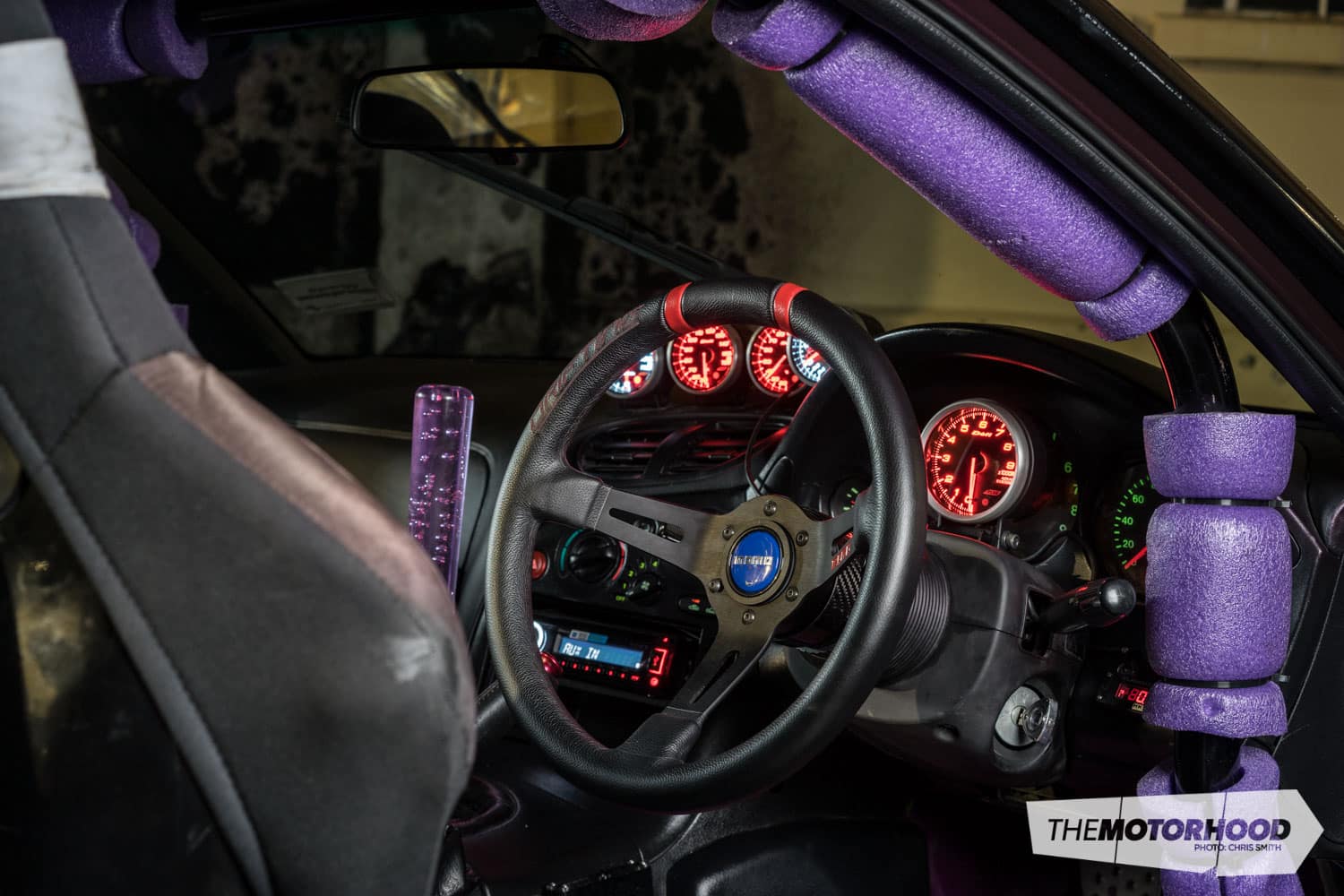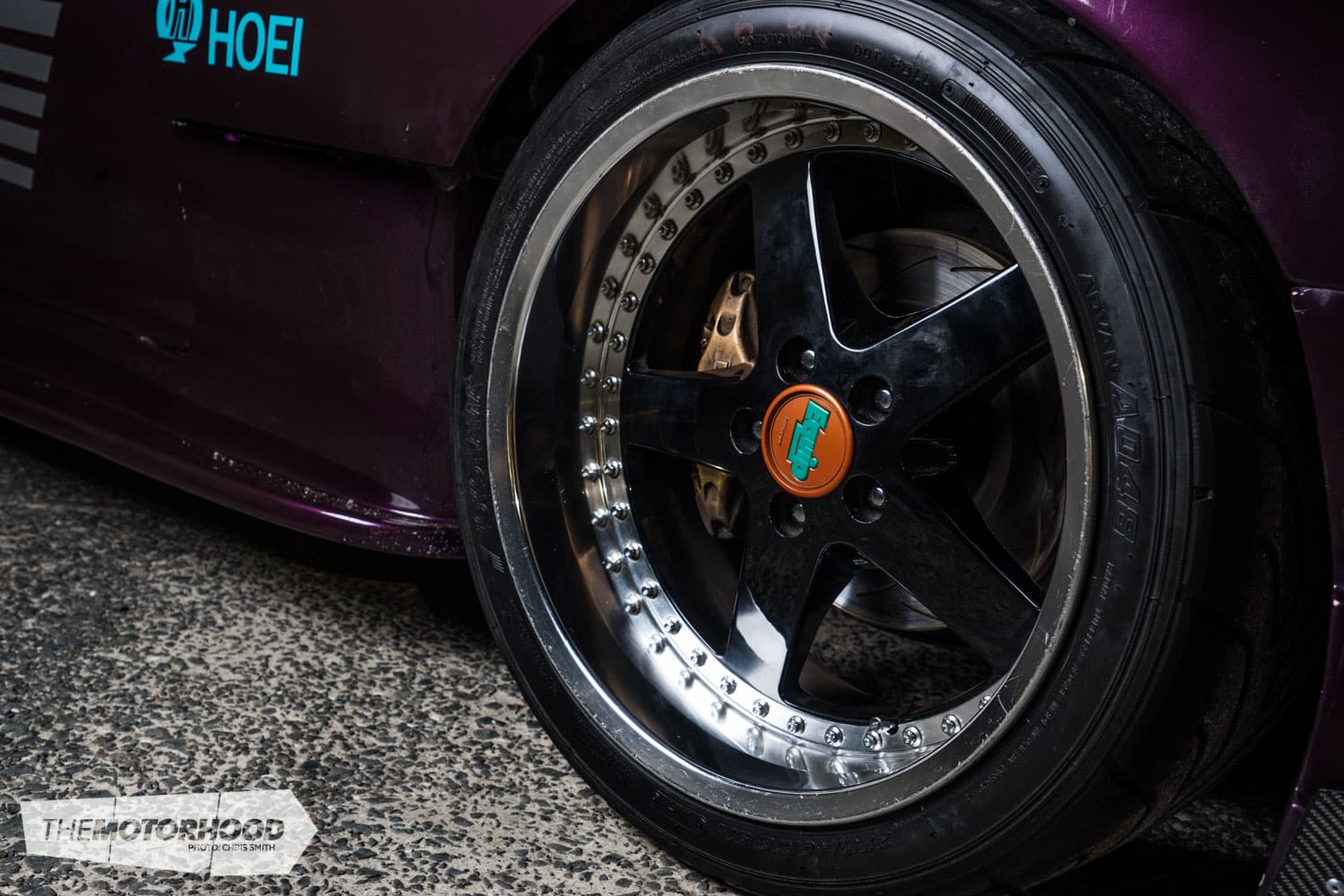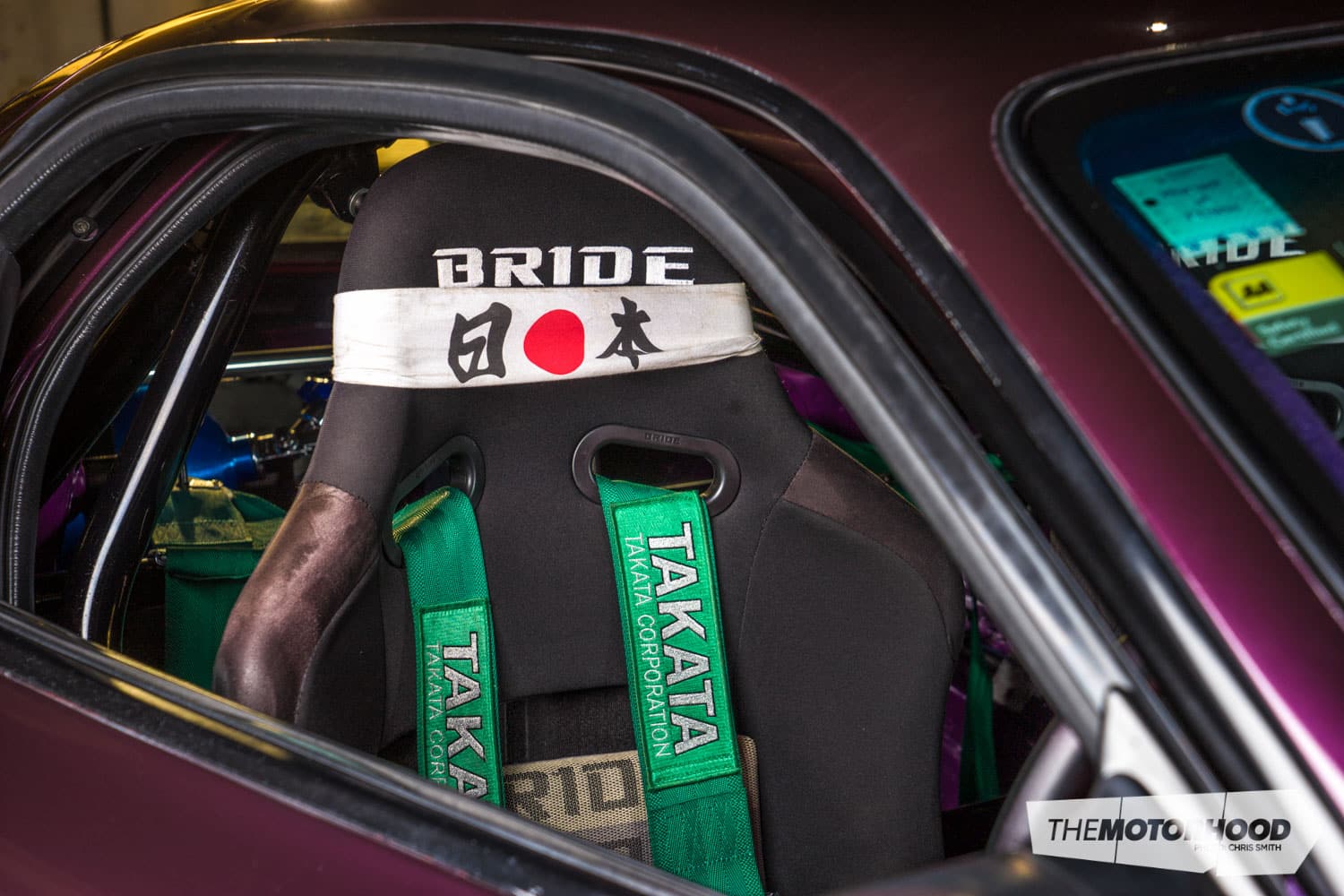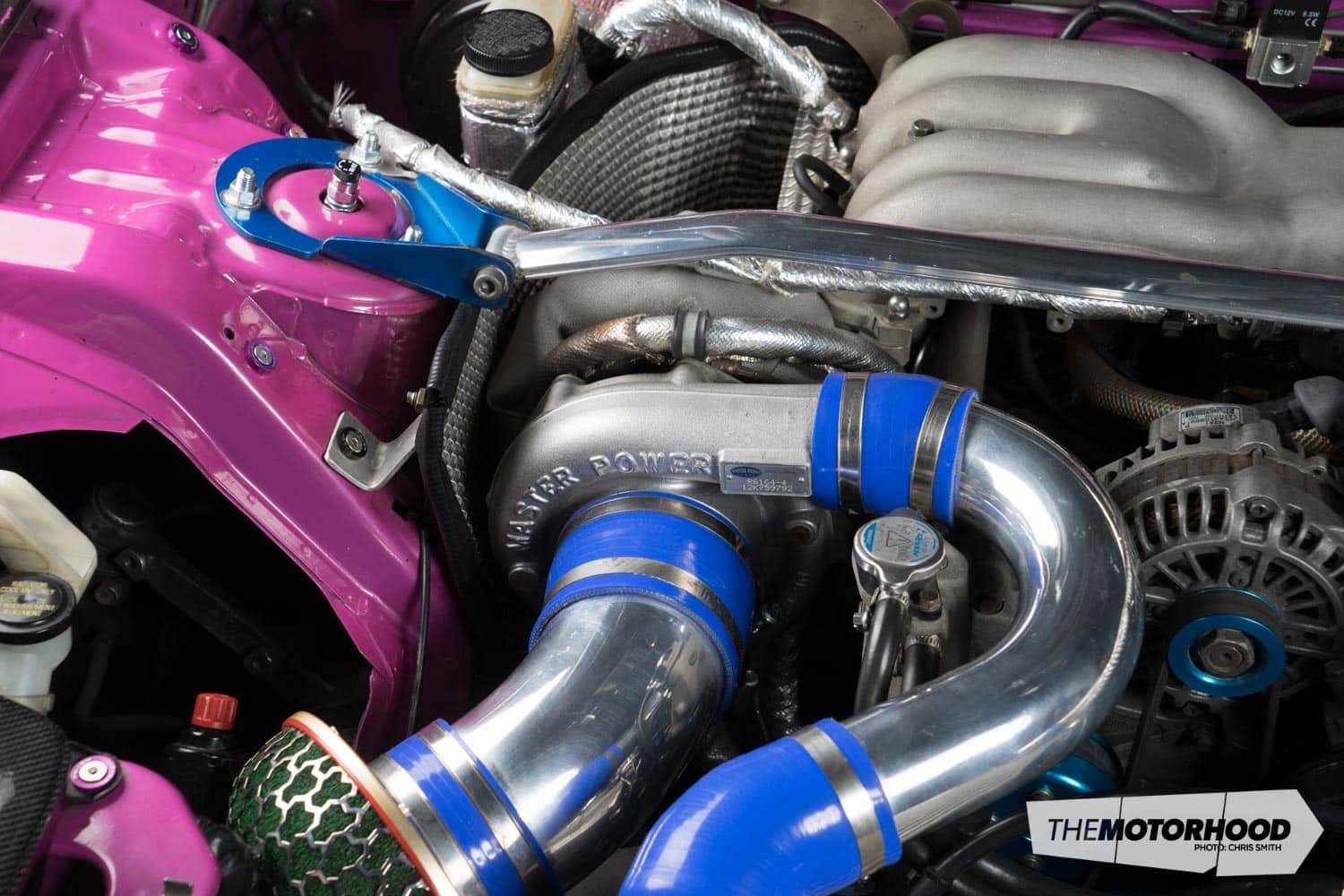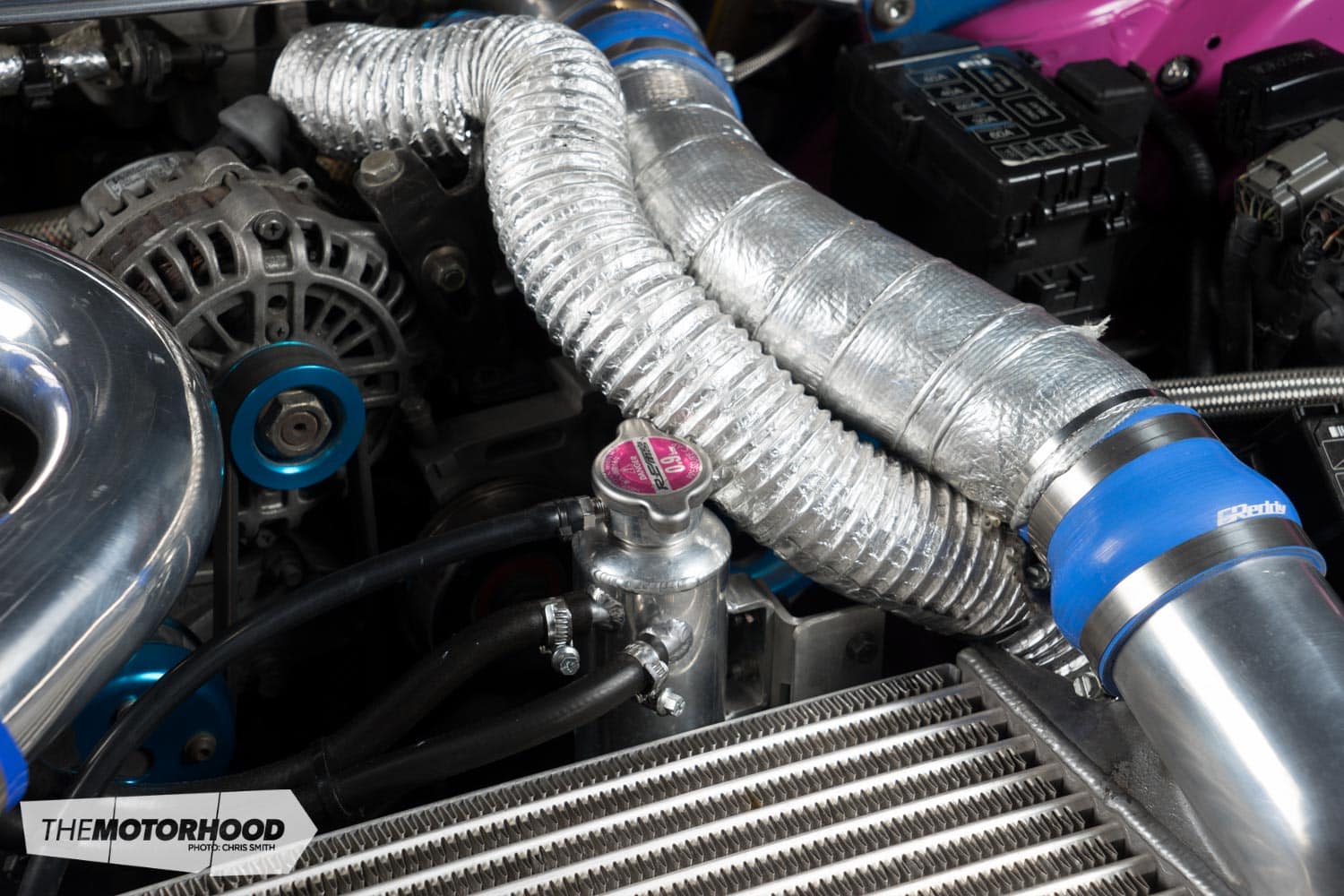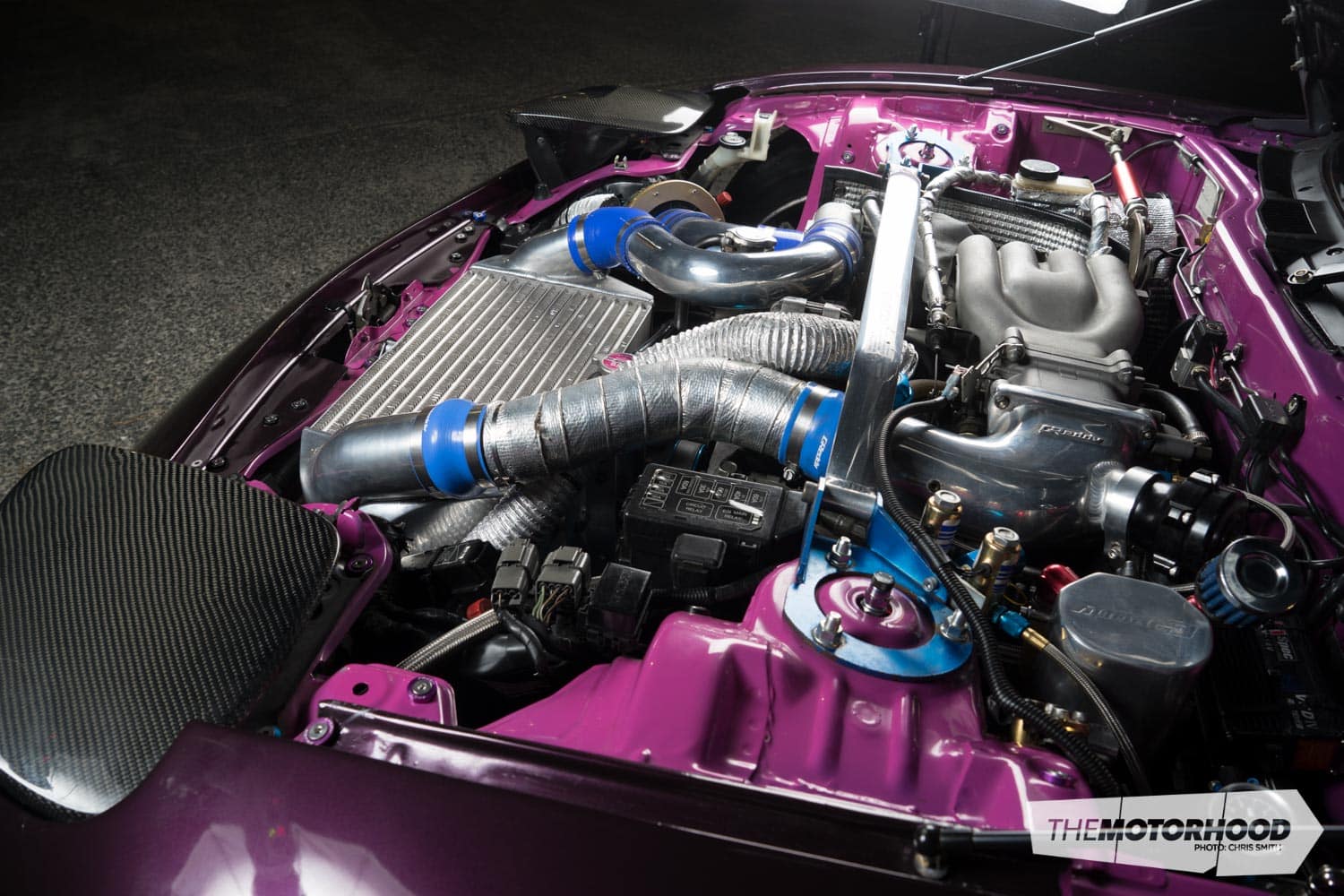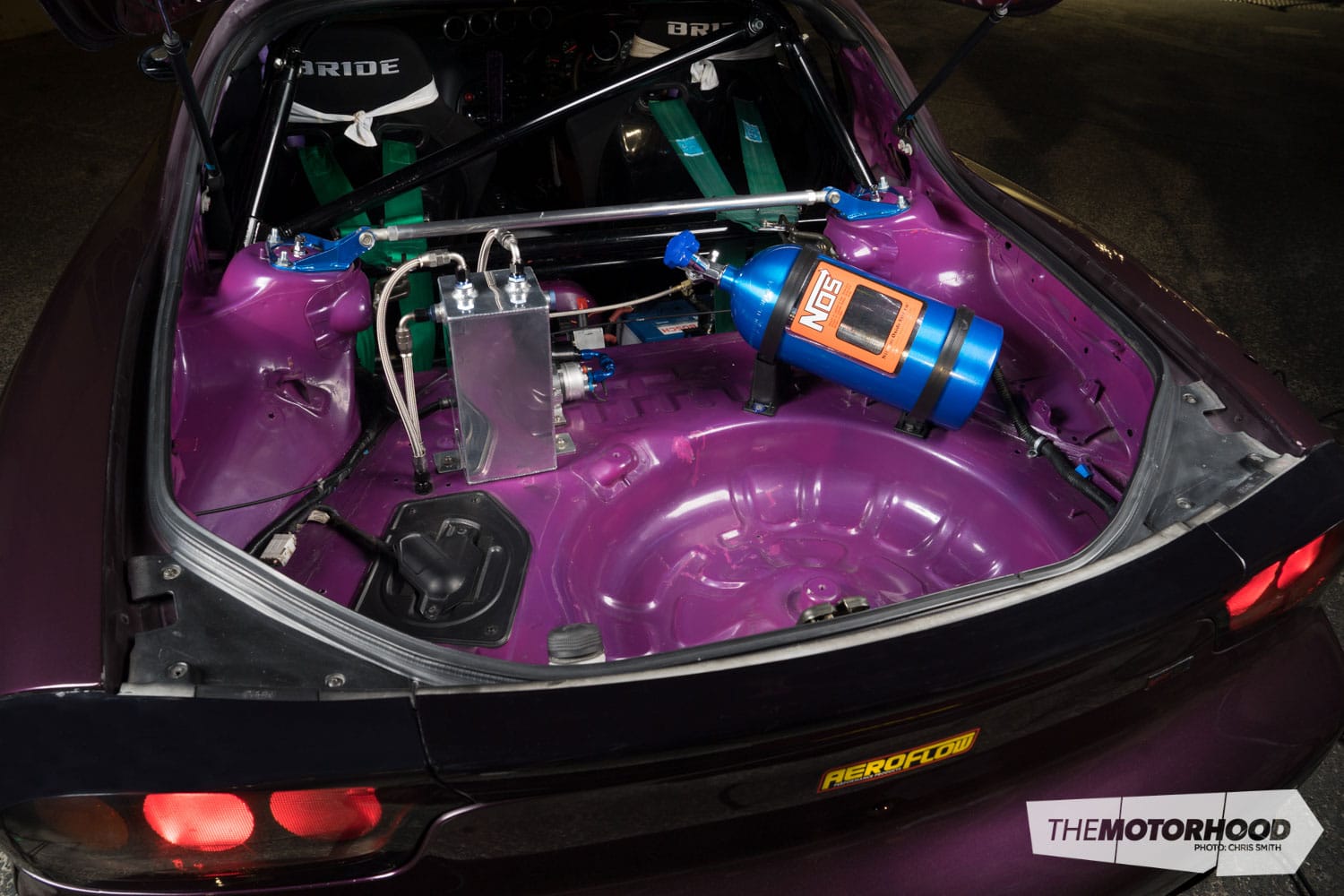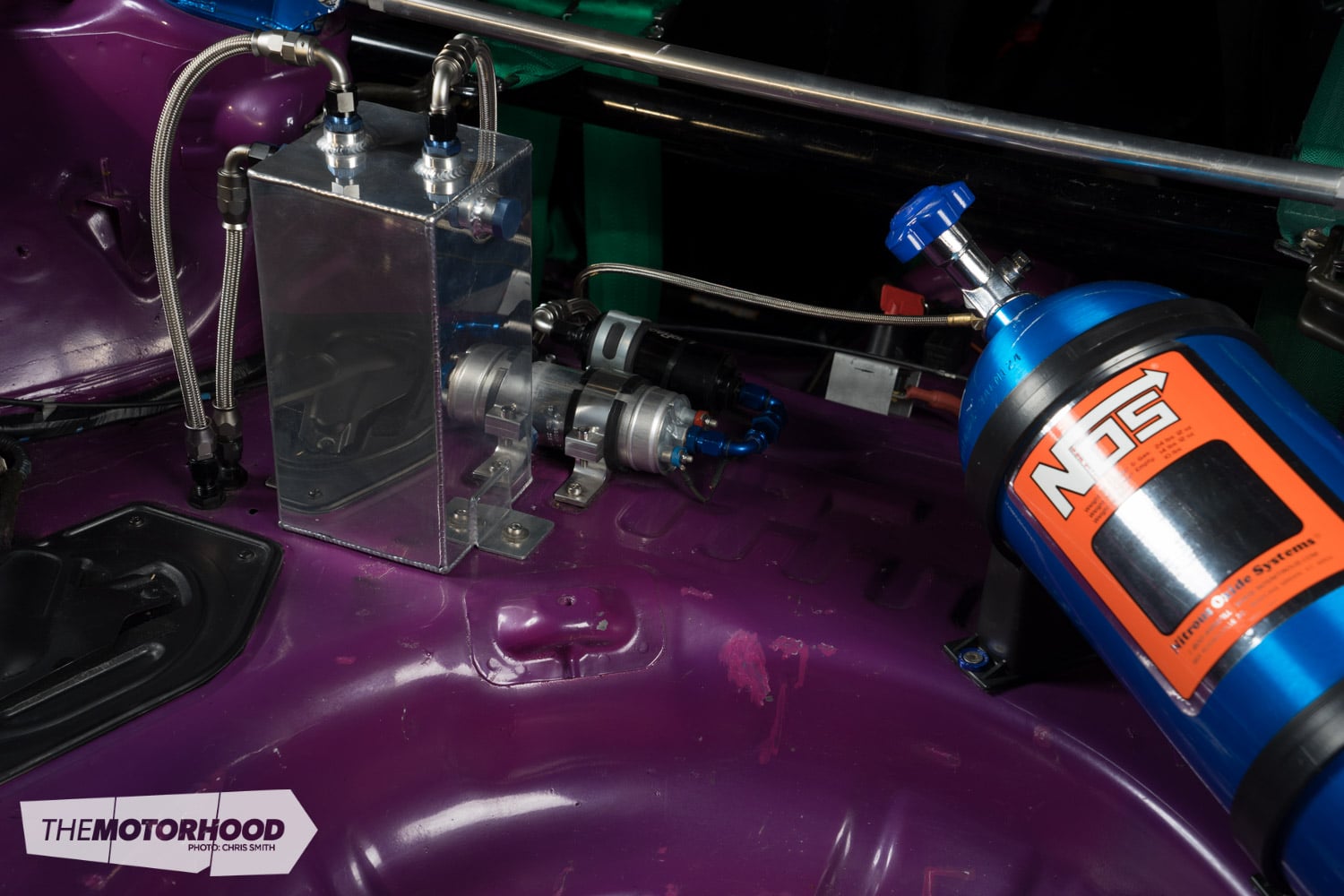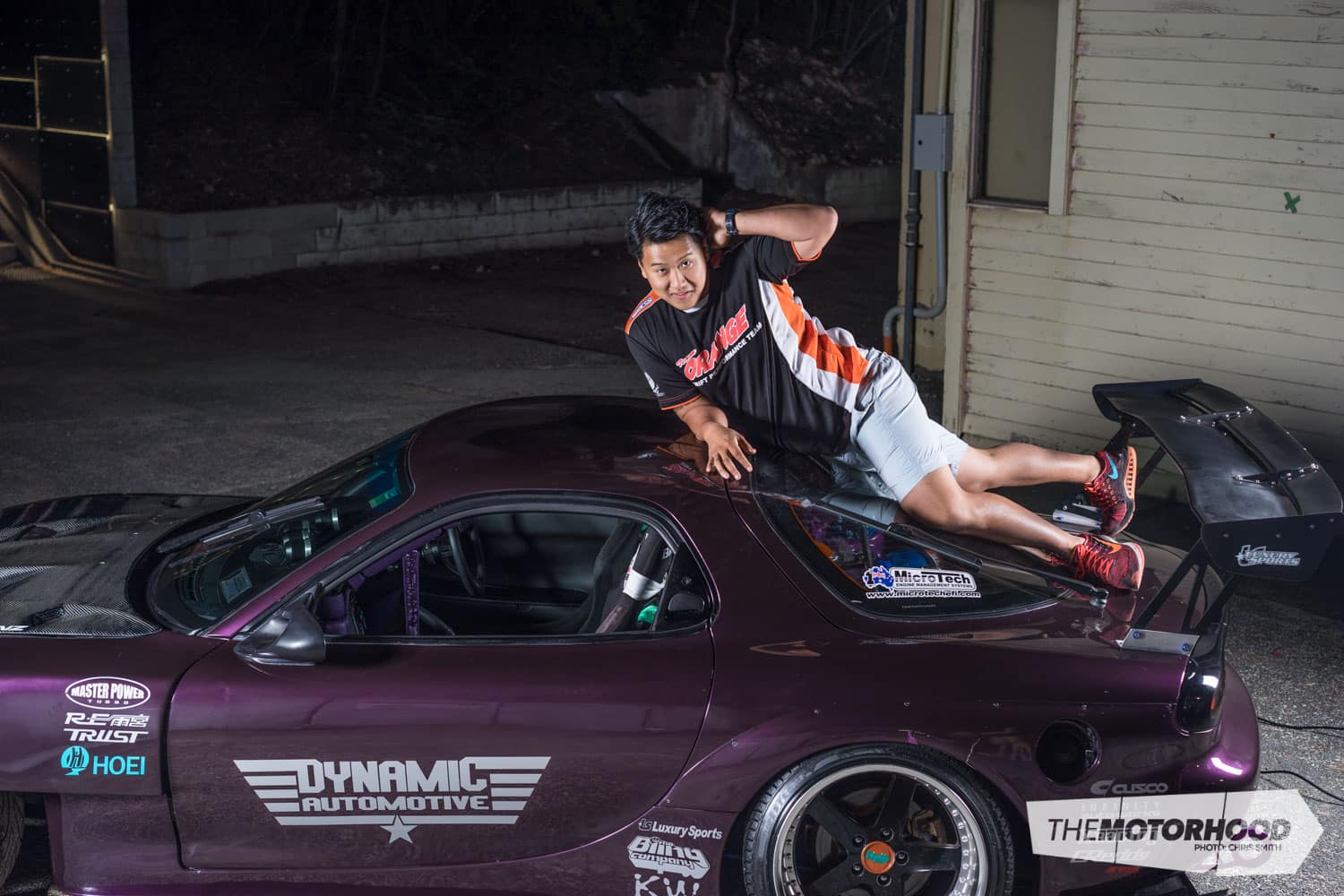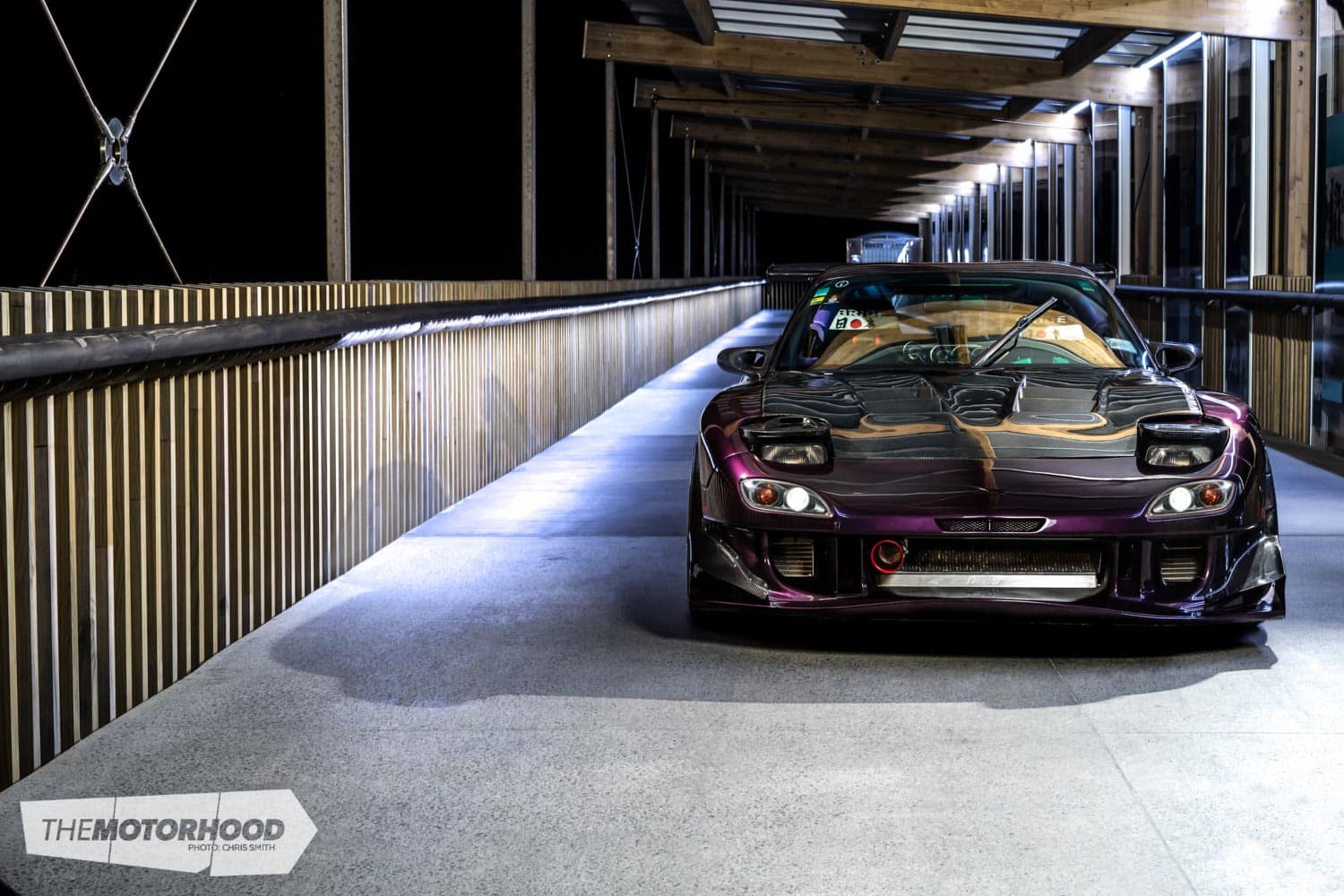data-animation-override>
“Built for both drifting and circuit work, Jack’s RE Amemiya-influenced RX-7 is the perfect hybrid”
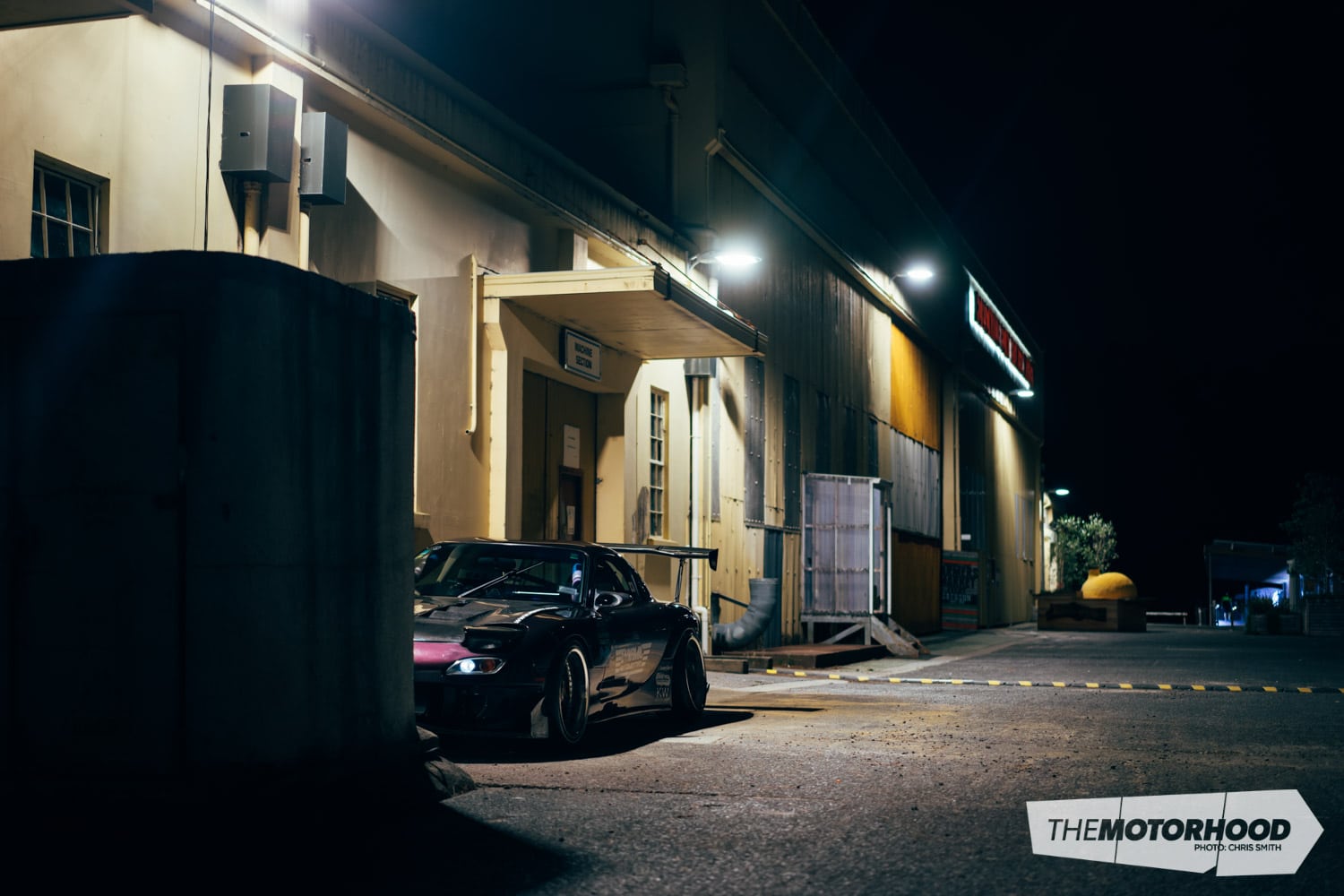
There are some cars — much like Jack Sheng’s Mazda RX-7 — that require a fair amount of groundwork before a photo shoot can be set in stone. A simple ‘roll her out of the workshop and shoot it in the car park’ attitude simply doesn’t suffice. So, after a few weeks of planning and location scouting, we knew this sinister RX-7 should only be shot at night. After all, the example you see here is a true wangan warrior — raced, thrashed, and drifted in the early hours of the morning on a regular basis, Japanese influenced through and through.
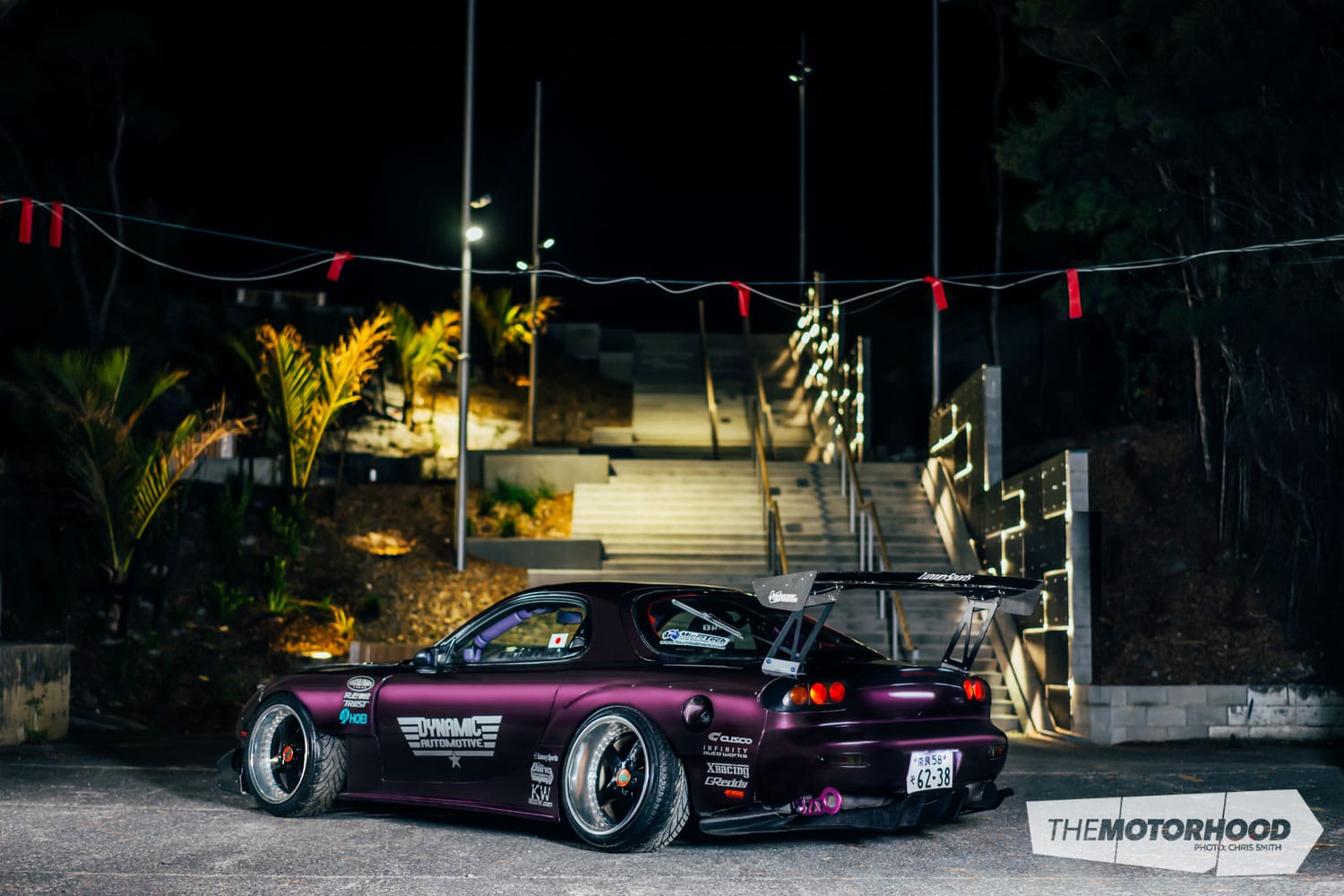
Unlike most of us, Jack hasn’t always been a mad petrolhead — previously owning an R34 Skyline and an S15 Silvia would make you think so, but for Jack they were just simply nice cars to get around in. After selling the Skyline, Jack was thinking about what to purchase next, and he was intrigued when a friend told him about a special Mazda with an engine that was only 1300cc, and could produce power similar to a GT-R. “I didn’t know what a Rotary engine was, and none of my mates wanted to own one as they’d heard horror stories, but I was young so I didn’t really care, and I started the hunt for one.” After searching for a while, Jack found a yellow example online that was within the price range, and after enlisting a close friend to drive it back from New Zealand’s windy capital, he was the proud owner of a Series 7 RX-7.
With the RX-7 finally home, Jack started planning immediately, as he explained. “What I wanted to do first to the RX-7 was make it look like a Series 8 model. I purchased a Series 8 rear wing and front bumper, but this was around about when I found out about RE Amemiya, and decided this was the ultimate look for my RX-7.”
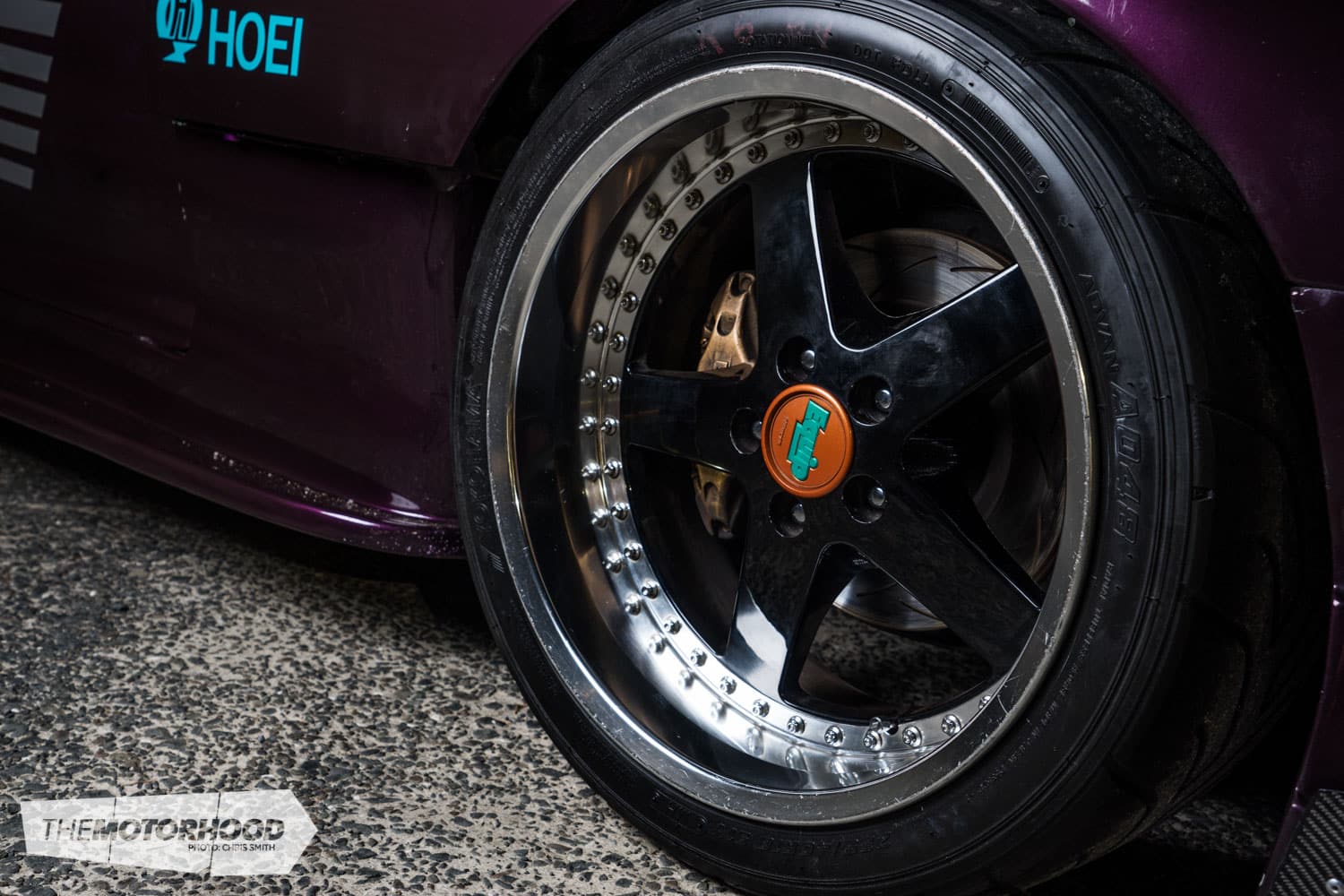
After putting the exterior plans on hold for a while, Jack focused on upgrading the already impressive factory handling of the RX-7 by improving the chassis rigidity. Every undercarriage bush was replaced with Nolathane, or costly Mazdaspeed equivalents. Having cycled through roll cage options, Jack ditched his original six-point Cusco unit after he found a better one during a trip to Japan.
“Having a good roll cage is really important to me, so when I found a 12-point Cusco cage in Japan for $500 I couldn’t pass it up. It was only going to work out cheaper if I could get a deal on freight, so I ended up sacrificing my luggage, and took it home with me as my carry-on luggage on the plane. My friends laughed at me when they picked me up at the airport.”
With chassis rigidity now well and truly sorted, a set of Blitz ZZR circuit coilovers were sourced from Japan, along with every adjustable suspension arm available for the FD. Jack had plans to replicate the RE Amemiya RX-7s he had seen in Japan, which would dictate the use of Enkei RPF1s and although these were used for a period, Jack finally settled for a staunch set of Work Equips — 18- by 9.5-inch up front and 18- by 10-inch down the back, both negative 27 offset.
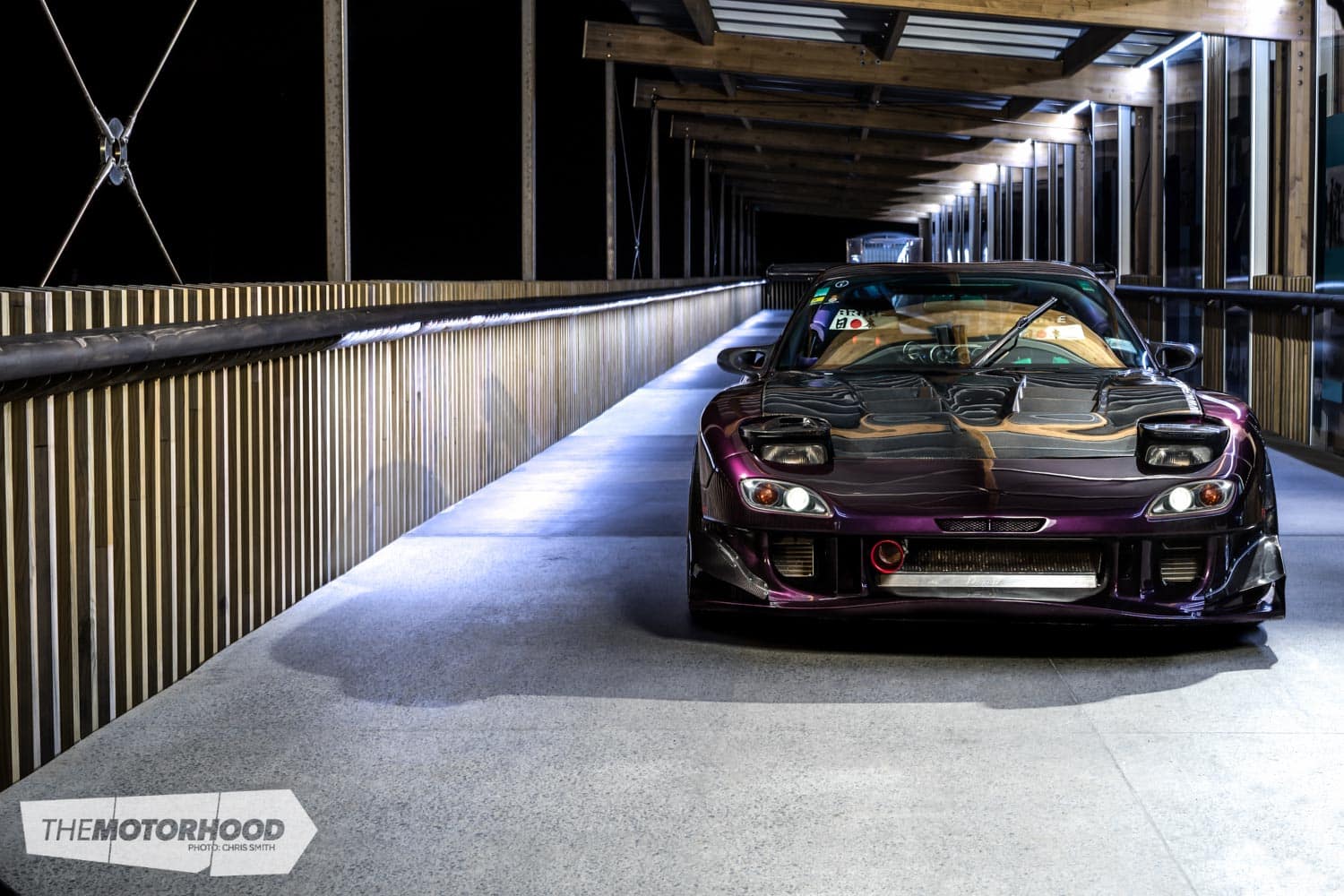
As we found out, Jack is quite handy behind a spray gun, and as he’d painted cars for Sky Zhao and other buddies in the past, it was no surprise when he told us the RX-7 had gone through several colours. Originally yellow, it finally ended up in the purple you see before you, but only once the RE Amemiya widebody kit was sourced. As Jack is good friends with Ryan Sun at Luxury Sports, several of the body components were obtained with his help. To finish things off, an RE Amemiya rear diffuser was modified for a more aggressive fitment, a Voltex carbon-fibre GT wing was installed down the back, and various carbon-fibre splitters made their way onto the front bumper.
The RX-7 was finally turning into the RE Amemiya RX-7 he had always wanted, but the grunt was still to come.
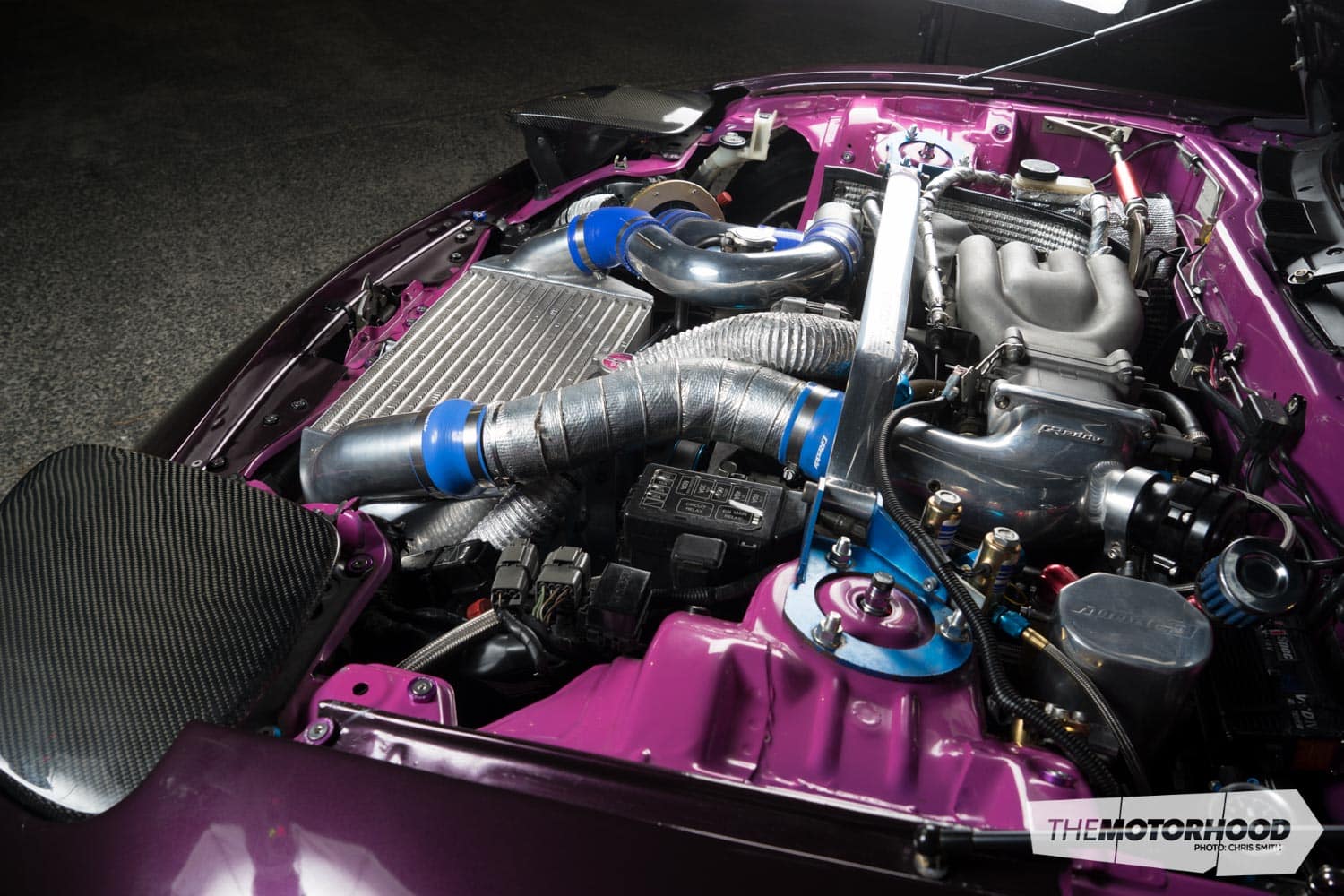
After three engine rebuilds due to various reasons, Jack was well and truly over having the RX-7 in the shop, and after leaving it in the shed for two years, he’d saved up enough coin to have the 13B built properly, as he explained.
“I wasn’t happy after the engine blew for the third time. This time allowed me to re-evaluate the build, and start collecting parts for the new set-up. After Oliver at Frantik installed a Master Power 60-1 turbo on one of his custom steel manifolds and the A’PEXi Power FC, he introduced me to Chee Lim. After talking with Chee we had a clear direction we wanted to go in, which included more boost and a new computer.”
Although the Power FC was more than up for the task, it was a plug-in item that meant plenty of unnecessary cabling could be binned. The decision was made to go with a MicroTech LT10, which required a complete rewire, but the results were worth it, as the engine bay appears much cleaner. A GReddy V-mount kit was sourced off a wreck from Japan, an HKS twin oil cooler kit was installed, and a GReddy intake manifold.
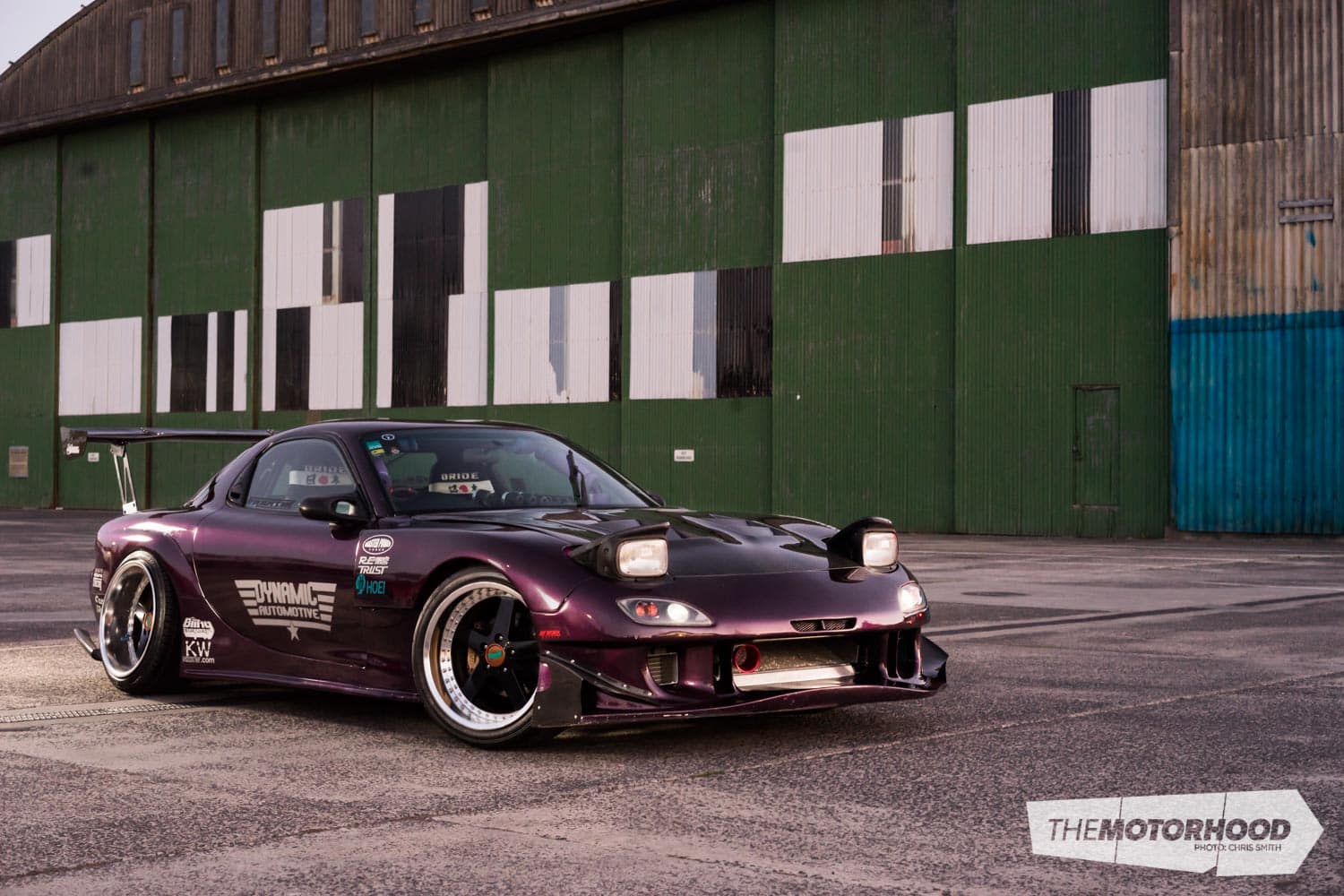
Rotaries love fuel regardless of their performance, but for Jack’s application 1500cc Bosch items were chosen, with a Bosch 044 supplying the steady stream of pump gas. “I really wanted a responsive set-up once completed, and after Craig Dyson finished the final tune I was very happy. I have full boost at 3800rpm, with power all the way through until the redline, and peaking at 270kW (362hp),” Jack explained.
After a five-year build, a few lessons learned, and plenty of cash spent Jack has finally been able to enjoy the RX-7. “The last track day I went to it didn’t overheat or break down, I could really enjoy the car and the event. The RX-7 is finally at a point now where I can continue driving it hard, and work on my driving. I couldn’t be happier with the car as an overall package.”
1996 Mazda RX-7 Efini Series 7
Engine
- Model: Mazda 13B, 1300cc
- Block: Stage two ported S7 plates
- Intake: GReddy intake manifold, HKS pod filter, GReddy intercooler V-mounted
- Exhaust: Three-inch steel system
- Turbo: Master Power 60-1
- Wastegate: 50mm Turbosmart
- BOV: 50mm TiAL
- Fuel: Tomei fuel pressure regulator, Bosch 1500cc injectors, Bosch 044 fuel pump, four-litre surge tank, aftermarket fuel rail
- Ignition: Bosch coil pack, MSD ignition leads, HKS spark plugs, D1 Spec ignition booster
- ECU: MicroTech LT10
- Cooling: Three-core alloy radiator, HKS twin oil-cooler kit
- Extra: HDi boost controller, HKS Type-0 turbo timer, GReddy oil catch can, GReddy water tank, GReddy lightweight pulley kit
Support
- Struts: Blitz ZZR adjustable coilovers
- Brakes: Factory
- Wheels: (F) 18×9.5-inch (-27) Work Equips (R) 18×10-inch (-27) Work Equips
- Tyres: (F) 235/40R18 Advan A048, (R) 265/35R18 Advan A048
Driveline
- Gearbox: Factory five-speed
- Clutch: Exedy heavy duty
- Flywheel: Lightweight
- Diff: Factory LSD
Exterior
- Paint: Custom purple pearl three-stage paint job by Infinity Autoworks
- Enhancements: RE Amemiya widebody kit installed by Rick Bishop, RE Amemiya rear diffuser and canards, RE Amemiya carbon-fibre bonnet, Voltex carbon-fibre GT wing
Interior
- Seats: Bride-style fixed back
- Steering wheel: Momo, Sparco quick-release boss kit
- Instrumentation: Defi BF series oil temperature, oil pressure, water temperature, boost, and tacho gauges
- Extra: Cusco 12-point bolt-in roll cage
Performance
- Power: 270kW (362hp) at the wheels on 16psi of boost
This article was originally featured in a previous issue of NZ Performance Car. Pick up a copy of the edition here:





